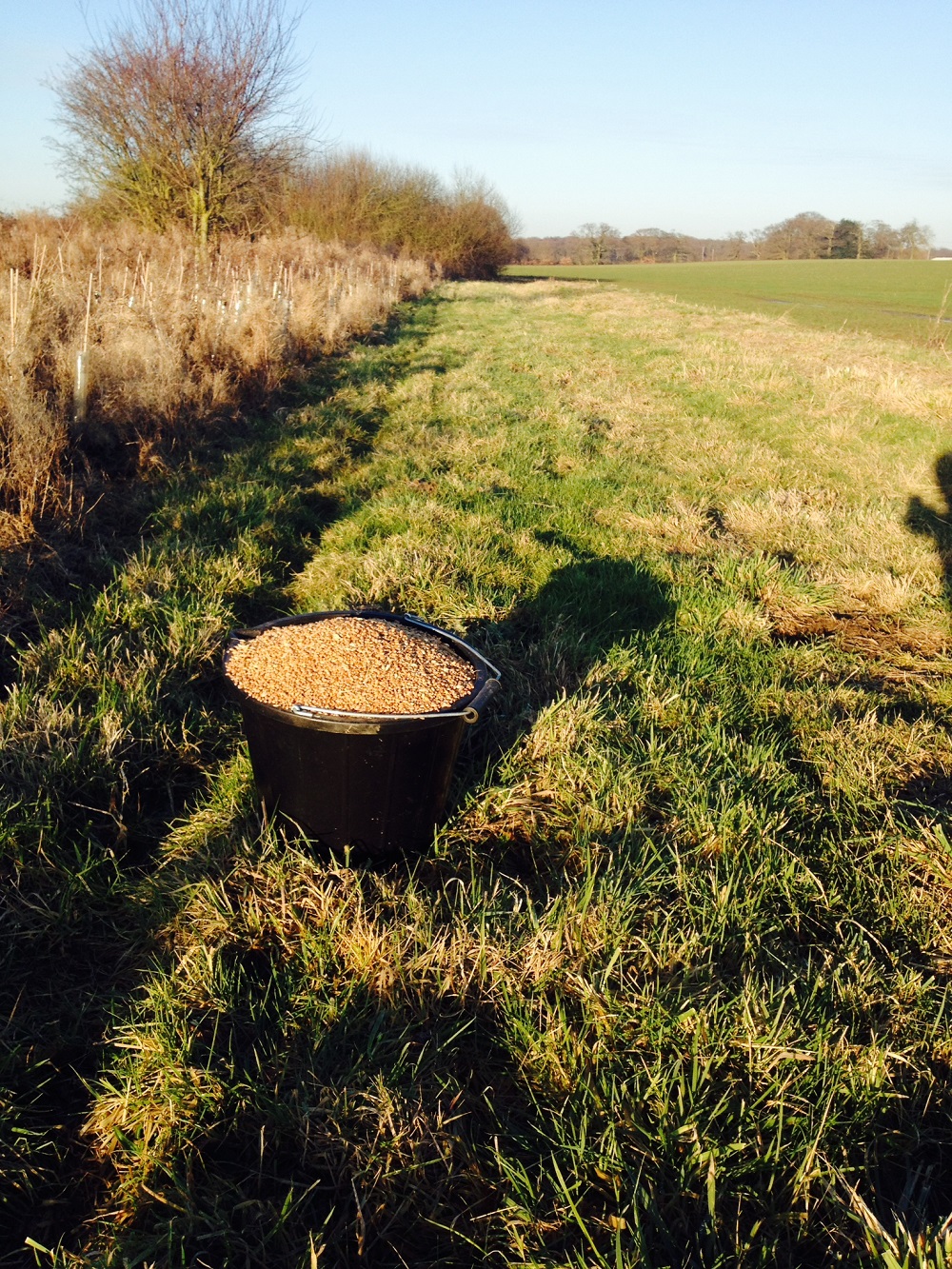
The early months of the year can find me feeding the ‘hungry gap’. These are the months, we’re told by experts in all things ornithology, that birds are on shortest measures when it comes to things to forage on.
What’s more it’s the coldest part of the year when birds need extra calories especially as they need to go into the spring nesting season in good fettle. Accordingly, whenever I’m out winter crop walking with the dog I take a handy couple of 10kg buckets of wheat to scatter along the margins. I’d like to say it’s a good way to use up ‘tail corn’ but ever since we took out the old Turner dressers in the grain stores in the 1980s, we haven’t had ‘tail corn’ any more.
Either way the birds seem grateful. It’s remarkable how if you return to the spot the following day then it’s all gone. Although our ELS scheme finished last autumn we’ve kept the 4-6m grass margins in place so these are the areas alongside the hedges that we feed. With changes in EFA rules being brought in for next year whereby it’ll no longer be permitted to use pesticides on pulses grown on EFA, we’ll no longer put our bean crop into EFA but rather put our old ELS margins instead.
So this year and going forward they’ll be kept in place. Some of these margins go back to set-aside days so they’re now 25 years old. Some are on the marsh fields and are going into the new Countryside Stewardship scheme which started at the beginning of the year. The worry here is we’re yet to see the final paperwork so we can sign on the dotted line. It’s not often I start an agreement that isn’t actually agreed.
Being easily distracted when doing this ‘we sow the seeds and scatter’ job, I imagine life before the seed drill when wheat was sown by hand. It’s probably my ineptitude but it’s no easy feat achieving 300 seeds/m². You need to maintain an even ground speed of a stride per sec. Then there’s bout width established by swing of the arm. Finally, there’s rate dictated by size of handful. You do wonder if our ancient forefathers fretted about seed rates the way we do.

There’s a technology challenge to achieving correct seed rate and spreading pattern when feeding the hungry gap.
Branded
I was looking through a list of new fungicides in preparation for the 2017 disease-control programme and was struck by a few of the names such as Conviso Smart, Trivapo, Solatenol and Ascra Xpro. I sometimes do wonder why we can’t go back to old-fashioned brand names like Cheetah or Tiger rather than this latest fashion to pick names that sound like they come from old sci-fi movies starring Jane Fonda. Trying to remember this stuff is about as brain aching as starting to learn Swahili.
But having said that I’m kind of glad they’ve moved away from the macho brand names for agrochem nowadays.
Not that it’s ever happened to me but I’ve always worried whether one day there’d be a knock on the door from Mr and Mrs Worriedwell, newly moved in to a house close to a field near the farm. They’d say, “our daughter has a terrible headache. We looked it up on the Internet and it said it could be a reaction to pesticides and we did notice you spraying that field near us last week. It did smell a bit funny so we were wondering what was the stuff you were spraying?”
Then it would be much better to say, “I was spraying a tank-mix of Mistymorn and Puppylove”, rather than “that was Cyperkill and Dagger”.
I’ve also thought it would be good if they could put nicer smelling additives into sprays. All too often when we’ve been spraying, I’m reminded of my favourite line in Apocalypse Now – “Gad, I just love the smell of Napalm in the morning”.
This is all the more pertinent as I notice Friends of the Earth have declared war on seed dressings such as Deter, determined to see them banned. One of their concerns seems to be the dust that blows on the wind into hedgerows as seed is poured into drills. If that’s their worry, then I’d be quite happy for a law requiring all insecticide seed dressings to be polymer based to minimise dust.
But one suspects this isn’t about common-sense reasonableness on behalf of Friends of the Earth but rather a public-facing campaign demonising pesticides and wanting them banned. Meanwhile UK production continues to fall and our competitors abroad gain the advantage of continuing to use cost-saving pesticides banned in the UK.




